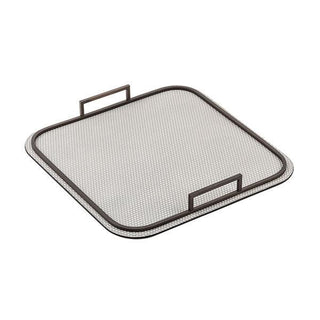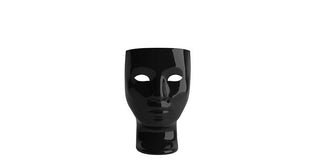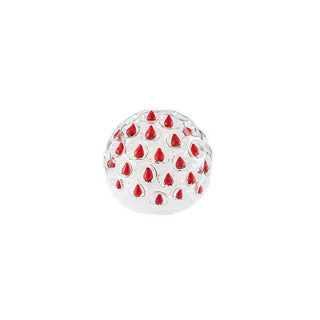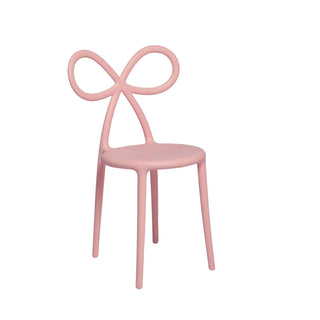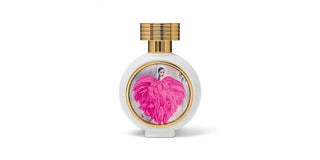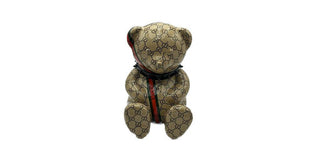Giulietta E Romeo designed by Riccardo Schweizer for Bosa is a set of plates for two in ceramic that looks like a sphere that magically breaks down, with perfect lines and interlocking games that allow you to save space. Available in different finishes.
Dimension: L. 23 cm - P. 23 cm - H. 23 cm
Riccardo Schweizer
Riccardo Schweizer was born in Mezzano di Primiero (Trento) on 31 August 1925, at the age of eleven he painted the first frescoes, which still exist today. After having attended the elementary schools of Mezzano and the middle schools of Fiera di Primiero, he moved to Trento and then to Belluno to attend the courses of the Industrial Building Institute.1945 he Enrolls at the Carmini Art Institute in Venice.
1947 Bruno Saetti calls him to the Academy of Fine Arts.
1948 Meets Zoltán Rákosi, Hungarian Pedagogist who will strongly influence his cultural education.
1950 He moves to Vallarius to meet Picasso: in this way he also has the opportunity to see Chagall, Cocteau, Paul Eluard, Tamayo, Pignon, Pierre Abraham, André Wurmser, Massimo Campigli, Roger Capron, Le Corbusier.
1954 He returns to Italy and accepts the chair of arts and design
at the lower middle schools of Arco and Ceniga (Trento). After only one month he left and moved to Venice accepting Saetti's invitation to work as his assistant at the Academy. In those years he lived at the house of the painter Vittorio Basaglia who, in that period, was the driving force and the touchstone of his works. Most of the time he attends the cultural avant-guarde club and has the opportunity to meet, among others, Luigi Nono, Bruno Maderna, Gino Marinuzzi, Igor Stravinskij, Salvatore Quasimodo, Vittorio Klauser, Francesco Tentori, Virgilio Guidi, Diego Valeri, Rodolfo Pallucchini, Giuseppe Marchiori, Giuseppe Mazzariol, Elio Vittorini, Carlo Scarpa, Peggy Guggenheim, Guido Cadorin, Guido Perocco, Alberto Viani, Filippo de Pisis, Felice Carena, GastoneBreddo and Carmelo Zotti who in
1960 will take his place at the Academy.
1958 On the occasion of the 10th anniversary of the Picasso Museum Foundation in Antibes, a large solo exhibition is set up. He will be visited, among others, by Jacques Prévert, Jean Cocteau and Germaine Richier.
1959 Interview with Filippo de Pisis, Giorgio De Chirico, Max Ernst, Jean Arp and Carlo Levi for the RAI channel in Venice.
1960 He leaves the Academy of Venice and settles on the French Riviera. In addition to setting up numerous exhibitions organized by the art dealer Michele Sapone, he enhances his activity as a potter together with his friend Roger Capron. In this period the trio Schweizer, Capron, Druet stands out. It is a working and collaborative group that will develop in the following years.
1961 The first large-format mural works are born: "Apotheosis of technique", fresco for the Italian Publishing Institute in Milan; in San Martino di Castrozza the acrylic panels for the "Dolomiti e San Martino" Hotel project and "Il poverello", a fresco for the facade of the Hotel San Martino; "Tempesta sul lago", a fresco for the Hotel Limone in Limone on the Garda. First UNAM Prize, Nice (presidents: Pierre Bonnard and Henri Matisse).
1963 Marries Dina Ravanae; their children Monica and Barbara will be born.
1965 Bas-relief in ceramic for the new thermal baths of Levico (Trento).
1966 He creates a concrete bas-relief for the middle school in Cadola (Belluno) and two frescoes of the Vajont disaster.
1967 He creates two war memorials for Fiera di Primiero and Pieve d'Alpago in the Belluno area. Montecitorio Award "Il Baricentro".
1969 Two of his stained glass windows are placed in the Casino Town Hall of Tripoli.
1970 The activity of designer for Ceramica Pagnossin of Treviso begins with the production of table services.
1974 1st Fiocco Prize, Sospirolo.
1977 He creates a large panel for the meeting room of the Agricultural Institute of San Michele.
1978 Designs the interiors of the "da Silvio" restaurant in San Michele all'Adige, from the walls to the decorative panel, from the lighting to the devices (multi-purpose grills, Naraj stone for cooking on the table, etc.), alternating current completing the idea of total art (architecture-painting) in which he has always been interested. He leaves the position of designer to Pagnossin Lt. and spends longer periods on the French Riviera.
1980 Creates a technique based on oxides and cement for a large external bas-relief covering three facades of the town hall of Carros (Nice), a building designed by François Druet.
1981 "Provincia di Bologna - IX Biennale Il Muro Dipinto" Award, Dozza.
1982 Wins the International Competition for Cannes Palace of Congresses and Cinema, also designed by François Druet, with marble and wall-to-wall floors, wall decorations, luminous ceilings, crown-shaped structures, etc.
1983 Gold medal at the 10th Biennial "Il Muro Dipinto" in Dozza (Bologna) with the fresco "Peasant civilization", also quoted by "The New York Times" (14 August 1994).
1986 Paints a 75 m2 fresco for the new headquarters of the Cultural Institute of Trento. As a designer he designs a glass object with which he wins the 1st Murano Prize, sponsored by Accornero of Turin.
1987 Decorates the Mayor's Hall and the Council Chamber in the new Cap d'Ail municipal building (Montecarlo).
1990 - 1991 He designs and builds the monumental concrete sculpture for the new seat of the Trento Chamber of Commerce, also engaging in an intense exhibition activity both in Italy and abroad.
1992 For the town of Siror (Trento) he painted an imposing and evocative fresco of over 130 square meters entitled "The dreams of the Bancalonga".
1993 He is committed to painting another large fresco for the Fiera di Primiero (Trento) building in which the artist tells, with his unmistakable language, the habits and traditions of the people about him. He makes "The Otter and the Valley" for the neighborhood building.
1996 For the municipal swimming pool of Primiero he executes a ceramic work of 150 square meters.
1997 - 1998 Realizes fifteen models of clothing for the Art School of Cortina. 1st Prize "President Association Critique Française", Paris (1997).
1999 He executes "The dreams of the tree" for the wall outside the elementary school of Mezzano. "Etruschi", Second Prize, Florence 1999.
2000 The book "Schweizer, From painting to project, works 1936/2000" is published, edited by M. Scudiero, presented by Giulio Andreotti in Rome and by the President of the Autonomous Province of Trento, Mario Cristofolini.
2001 Carlo Azeglio Ciampi, President of the Italian Republic, confers "motu proprio" the official title of the Italian Republic, nomination "Official Knight".
2002 He executes "La vite e il vino", a glass of 4x2 meters, for the new Enoteca di Aldeno.
2003 Joins the Accademia degli Agiati of Rovereto and the "Accademia degli Accesi" of Trento.
2004 Riccardo Schweizer dies in September.
Giulietta E Romeo designed by Riccardo Schweizer for Bosa is a set of plates for two in ceramic that looks like a sphere that magically breaks down, with perfect lines and interlocking games that allow you to save space. Available in different finishes.
Dimension: L. 23 cm - P. 23 cm - H. 23 cm
Riccardo Schweizer
Riccardo Schweizer was born in Mezzano di Primiero (Trento) on 31 August 1925, at the age of eleven he painted the first frescoes, which still exist today. After having attended the elementary schools of Mezzano and the middle schools of Fiera di Primiero, he moved to Trento and then to Belluno to attend the courses of the Industrial Building Institute.1945 he Enrolls at the Carmini Art Institute in Venice.
1947 Bruno Saetti calls him to the Academy of Fine Arts.
1948 Meets Zoltán Rákosi, Hungarian Pedagogist who will strongly influence his cultural education.
1950 He moves to Vallarius to meet Picasso: in this way he also has the opportunity to see Chagall, Cocteau, Paul Eluard, Tamayo, Pignon, Pierre Abraham, André Wurmser, Massimo Campigli, Roger Capron, Le Corbusier.
1954 He returns to Italy and accepts the chair of arts and design
at the lower middle schools of Arco and Ceniga (Trento). After only one month he left and moved to Venice accepting Saetti's invitation to work as his assistant at the Academy. In those years he lived at the house of the painter Vittorio Basaglia who, in that period, was the driving force and the touchstone of his works. Most of the time he attends the cultural avant-guarde club and has the opportunity to meet, among others, Luigi Nono, Bruno Maderna, Gino Marinuzzi, Igor Stravinskij, Salvatore Quasimodo, Vittorio Klauser, Francesco Tentori, Virgilio Guidi, Diego Valeri, Rodolfo Pallucchini, Giuseppe Marchiori, Giuseppe Mazzariol, Elio Vittorini, Carlo Scarpa, Peggy Guggenheim, Guido Cadorin, Guido Perocco, Alberto Viani, Filippo de Pisis, Felice Carena, GastoneBreddo and Carmelo Zotti who in
1960 will take his place at the Academy.
1958 On the occasion of the 10th anniversary of the Picasso Museum Foundation in Antibes, a large solo exhibition is set up. He will be visited, among others, by Jacques Prévert, Jean Cocteau and Germaine Richier.
1959 Interview with Filippo de Pisis, Giorgio De Chirico, Max Ernst, Jean Arp and Carlo Levi for the RAI channel in Venice.
1960 He leaves the Academy of Venice and settles on the French Riviera. In addition to setting up numerous exhibitions organized by the art dealer Michele Sapone, he enhances his activity as a potter together with his friend Roger Capron. In this period the trio Schweizer, Capron, Druet stands out. It is a working and collaborative group that will develop in the following years.
1961 The first large-format mural works are born: "Apotheosis of technique", fresco for the Italian Publishing Institute in Milan; in San Martino di Castrozza the acrylic panels for the "Dolomiti e San Martino" Hotel project and "Il poverello", a fresco for the facade of the Hotel San Martino; "Tempesta sul lago", a fresco for the Hotel Limone in Limone on the Garda. First UNAM Prize, Nice (presidents: Pierre Bonnard and Henri Matisse).
1963 Marries Dina Ravanae; their children Monica and Barbara will be born.
1965 Bas-relief in ceramic for the new thermal baths of Levico (Trento).
1966 He creates a concrete bas-relief for the middle school in Cadola (Belluno) and two frescoes of the Vajont disaster.
1967 He creates two war memorials for Fiera di Primiero and Pieve d'Alpago in the Belluno area. Montecitorio Award "Il Baricentro".
1969 Two of his stained glass windows are placed in the Casino Town Hall of Tripoli.
1970 The activity of designer for Ceramica Pagnossin of Treviso begins with the production of table services.
1974 1st Fiocco Prize, Sospirolo.
1977 He creates a large panel for the meeting room of the Agricultural Institute of San Michele.
1978 Designs the interiors of the "da Silvio" restaurant in San Michele all'Adige, from the walls to the decorative panel, from the lighting to the devices (multi-purpose grills, Naraj stone for cooking on the table, etc.), alternating current completing the idea of total art (architecture-painting) in which he has always been interested. He leaves the position of designer to Pagnossin Lt. and spends longer periods on the French Riviera.
1980 Creates a technique based on oxides and cement for a large external bas-relief covering three facades of the town hall of Carros (Nice), a building designed by François Druet.
1981 "Provincia di Bologna - IX Biennale Il Muro Dipinto" Award, Dozza.
1982 Wins the International Competition for Cannes Palace of Congresses and Cinema, also designed by François Druet, with marble and wall-to-wall floors, wall decorations, luminous ceilings, crown-shaped structures, etc.
1983 Gold medal at the 10th Biennial "Il Muro Dipinto" in Dozza (Bologna) with the fresco "Peasant civilization", also quoted by "The New York Times" (14 August 1994).
1986 Paints a 75 m2 fresco for the new headquarters of the Cultural Institute of Trento. As a designer he designs a glass object with which he wins the 1st Murano Prize, sponsored by Accornero of Turin.
1987 Decorates the Mayor's Hall and the Council Chamber in the new Cap d'Ail municipal building (Montecarlo).
1990 - 1991 He designs and builds the monumental concrete sculpture for the new seat of the Trento Chamber of Commerce, also engaging in an intense exhibition activity both in Italy and abroad.
1992 For the town of Siror (Trento) he painted an imposing and evocative fresco of over 130 square meters entitled "The dreams of the Bancalonga".
1993 He is committed to painting another large fresco for the Fiera di Primiero (Trento) building in which the artist tells, with his unmistakable language, the habits and traditions of the people about him. He makes "The Otter and the Valley" for the neighborhood building.
1996 For the municipal swimming pool of Primiero he executes a ceramic work of 150 square meters.
1997 - 1998 Realizes fifteen models of clothing for the Art School of Cortina. 1st Prize "President Association Critique Française", Paris (1997).
1999 He executes "The dreams of the tree" for the wall outside the elementary school of Mezzano. "Etruschi", Second Prize, Florence 1999.
2000 The book "Schweizer, From painting to project, works 1936/2000" is published, edited by M. Scudiero, presented by Giulio Andreotti in Rome and by the President of the Autonomous Province of Trento, Mario Cristofolini.
2001 Carlo Azeglio Ciampi, President of the Italian Republic, confers "motu proprio" the official title of the Italian Republic, nomination "Official Knight".
2002 He executes "La vite e il vino", a glass of 4x2 meters, for the new Enoteca di Aldeno.
2003 Joins the Accademia degli Agiati of Rovereto and the "Accademia degli Accesi" of Trento.
2004 Riccardo Schweizer dies in September.


